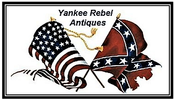 Loading... Please wait...
Loading... Please wait...-
Call us on (973) 810-2976
- My Account
- Gift Certificates
- Items / $0.00
All prices are in All prices are in USD
Categories
- Home
- Artillery related items
- Connecting bar from Revolutionary War Artillery Bar Shot, recovered at Yorktown
- Home
- Identified Artifacts
- Connecting bar from Revolutionary War Artillery Bar Shot, recovered at Yorktown
- Home
- Excavated Artifacts
- Connecting bar from Revolutionary War Artillery Bar Shot, recovered at Yorktown
- Home
- Late 18th Century / Early 19th Century
- Connecting bar from Revolutionary War Artillery Bar Shot, recovered at Yorktown
- Home
- Revolutionary War items
- Connecting bar from Revolutionary War Artillery Bar Shot, recovered at Yorktown
Connecting bar from Revolutionary War Artillery Bar Shot, recovered at Yorktown
Product Description
This is another early piece coming out of a 60-year collection of Revolutionary War artifacts. Being offered is a rare Revolutionary War connecting bar from an artillery bar shot. It measures 10” long with a 1 ¼” iron bar, and weighs 3 pounds, 6 ounces. During the Revolution both sides made extensive use of artillery and bar shots. This relic was recovered from the York River at Yorktown, Virginia (see pictures).
Bar shot could vary somewhat in the shape of the ends or the contour of the connecting rod. Whatever the particular form, the intent was the same: to introduce some instability in flight, particularly after it first hit something, which would cause the projectile to cut a wide path, particularly desirable when firing at the complex and vital rigging of sailing ships. It also had devastating results against ground troops.
Major General Marquis de Lafayette and his troops constituted at least half of the allied forces surrounding Yorktown. This meant that the French occupied at least half of the bulwarks surrounding Yorktown. In fact, Washington did not have sufficient troops to encircle Yorktown. Cornwallis and his troops would surely have escaped to New York, had it not been for the presence of the French troops.
On October 3rd, 1781, Allied Forces [American and French] met a force sent by Cornwallis at what became the Battle of the Hook in which the British were driven from Glouster to Yorktown. A French Navy fleet arrived in time to chase off a fleet of British ships that were to rescue Cornwallis and his troops from their dangerous position at Yorktown.
On Oct. 9, 1781, Washington himself fired the first American cannon at the Siege of Yorktown. With the ceremonial shot, one member of the Continental Army remembered, “Earl Cornwallis has received his first salutation.” The artillery barrage from 155 French and American howitzers, cannons, and mortars continued for the next 11 days.
The flashes of the cannons and the flaring bomb shells lit up the night sky as the allies dug trenches and moved closer to Cornwallis’ army. On Oct. 17, Cornwallis agreed to a cease fire. Almost 15,500 cannonballs and bomb shells had been hurled into Yorktown, about 80 rounds per hour. Two days later, Washington accepted the surrender of Cornwallis’ army.
The bar remains in very nice condition, having some overall roughness, but solid, no chipping or flaking. There is one in the Yorktown Revolutionary War Museum (see pictures). I also recently sold a complete example, also from Yorktown (see pictures). Actually, a bar by it self is kind of rare – I had complete examples and specimens with only one half-ball, but this is the first bar only I came across.
This collection began in the late 1950s and was created by private acquisitions, closed museums, and from lake divers. The collector meticulously displayed and cataloged every piece along with its provenance. His markings were crude at the time, but now they have proved to be very important. Many of the pieces went through electrolysis to remove crusted rust. This is the first time this relic is on the open market. As with all the pieces in this esteemed collection, a Certificate of Authenticity will be included.



